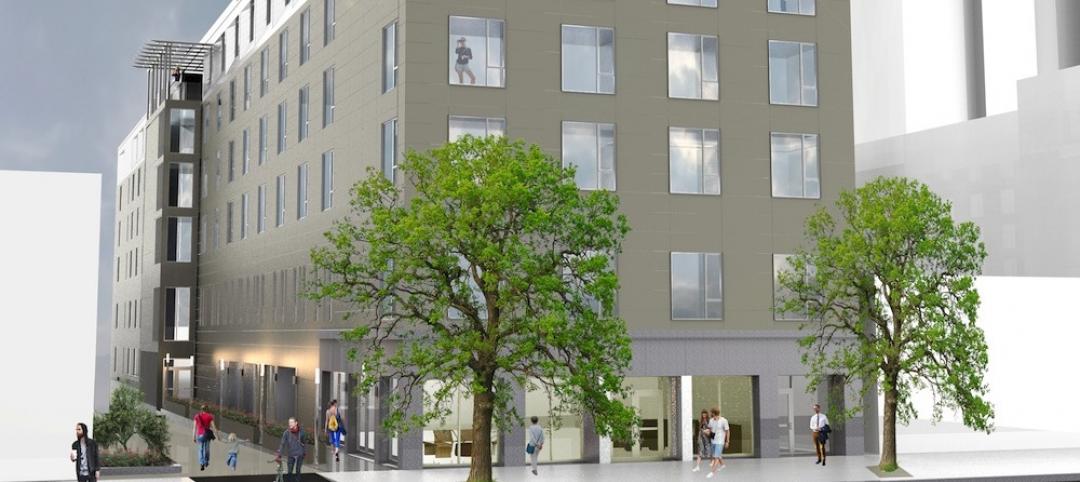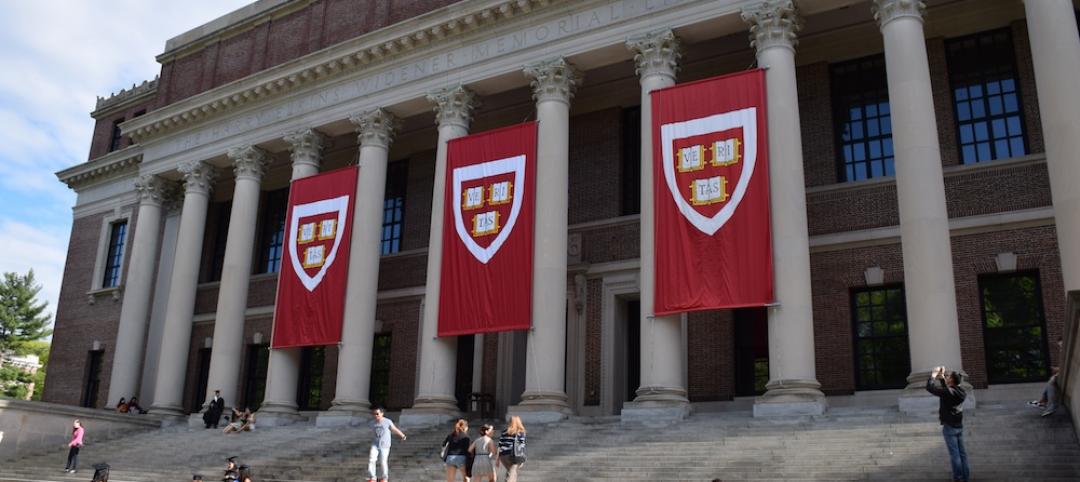The American Institute of Architects (AIA) Committee on Architecture for Education (CAE) has selected nine educational facilities for this year’s CAE Education Facility Design Awards.
The program honors educational facilities that the jury believes should serve as an example of a superb place in which to learn, furthering the client's mission, goals and educational program while demonstrating excellence in architectural design.
The jury for the 2015 Educational Facility Design Awards includes: J. Stuart Pettitt, AIA (Chair); Straub Pettitt Yaste Architects; William C. Ayers, education advocate; Victoria S. Bergsagel, Architects of Achievement; Mark Kranz, AIA, SmithGroup JJR; and Robert Miklos, FAIA, designLAB architects.
More information about the recipients here.
Berklee Tower; Berklee College of Music; Boston
Award of Excellence
William Rawn Associates, Architects, Inc.

All images courtesy of AIA
This 16-story mixed-use building is on the Berklee College of Music campus. A 40-foot-high performance and dining space shows student performances nightly and fronts onto a major Boston thoroughfare. Twelve floors, housing 380 students plus a fitness center and music practice rooms, sit above the performance space. Six double-height lounges on the residential floors link two floors of students. Two floors below grade house the largest recording studio complex in New England.
Health Sciences Education Building (HSEB); University of Arizona & Northern Arizona University; Phoenix
Award of Excellence
CO Architects with Ayers Saint Gross

The striated copper cladding helps protect against a harsh desert climate. The design meets the two universities’ desire for identity, sustainability and effective new learning environments. Many student-focused spaces encourage interaction between students and lecturers. The instructional elements of the project are organized in east-west blocks to minimize the building’s exposure to the intense Arizona sun. These blocks are located close together, creating a narrow “canyon”: a shaded space for outdoor gatherings and providing access to lecture halls.
University Center, The New School; New York City
Award of Excellence
Skidmore, Owings & Merrill LLP with SLCE Architects

With its 230,000-sf, seven-story campus center and 130,000-sf residential tower, the University Center reorganizes the elements of a traditional campus, from quads to classrooms and living quarters. Vertical, horizontal, and diagonal campus pathways ease movement through the building while increasing interaction among students and faculty. Academic spaces can be renovated or reconfigured with minimal impact on power, data, or lighting to meet changing needs.
Vashon Island High School; Vashon Island, Washington
Award of Excellence
Integrus Architecture

Located on a small island in Puget Sound, the design team sought to impart a quality of porosity to the new building. The concept of porosity defines how the building supports spatial connections and how students move in and out of the building. Shared areas are located adjacent to more formal teaching spaces, while a learning commons extends the library. A small group presentation room is located within the commons and a central courtyard provides sheltered outdoor learning areas.
Carl Sandburg Elementary School; Kirkland, Washington
Award of Merit
NAC|Architecture

Preserving the park-like feel of the northwest corner of Carl Sandburg Elementary School was central to the planning of the replacement school. The majority of the classroom neighborhoods are focused on a grove of 70-year-old Big Leaf maples, creating multiple outdoor learning spaces. The school has a capacity of 600 students in neighborhoods of either three or four classrooms. Each neighborhood is organized around an open learning area, small group rooms, and teacher planning areas.
Clough Undergraduate Learning Commons, Georgia Institute of Technology; Atlanta
Award of Merit
Bohlin Cywinski Jackson

The Clough Commons is at the center of Georgia Tech’s campus. The three dimensional grid of circulation and daylight frames large sections of furnished common spaces for student study, interaction and experiential learning. The building anchors campus circulation and frames Tech Green, the school’s central outdoor space. Clough Commons's landscaped roof garden is one of Tech’s most popular destination amenities.
Reed College Performing Arts Building; Portland, Oregon
Award of Merit
Opsis Architecture LLP

Reed College’s Performing Arts Building creates a 78,000-sf, cross-disciplinary home for the arts, like theatre, dance, and music programs. The building functions as the public front door to the campus. All performance and teaching spaces open to the three-level, light-filled, arts atrium merging informal and formal learning.
e3 Civic High School; San Diego
Walter Taylor Award
LPA, Inc.

The central circulation provides students with more than just a path of travel as the central steps and gallery space connecting the two floors. Every gathering space has a pull out or quiet area and every learning cluster or village has a small team room and a larger social space, all to support learning skills like critical thinking, collaboration, and communication.
Nueva School at Bay Meadows; San Mateo, California
Shirley Cooper Award
Leddy Maytum Stacy Architects

The Nueva School's new campus provides innovative educational spaces that supports cross disciplinary engagement and project-based inquiry. It fosters a strong community, models healthy, low-carbon living and learning, and adaptively reuses space at a former horse racing venue.
Related Stories
Building Team Awards | May 31, 2016
Gonzaga's new student center is a bustling social hub
Retail mall features, comfortable furniture, and floor-to-ceiling glass add vibrancy to the new John J. Hemmingson Center.
University Buildings | May 26, 2016
U. of Chicago approves Diller Scofidio + Renfro design for new campus building
With a two-story base and 165-foot tower, the Rubenstein Forum will have room for informal meetings, lectures, and other university events.
University Buildings | Apr 27, 2016
SmithGroupJJR’s Electrical and Computer Engineering Building named 2016 Lab of the Year
Sustainable features like chilled beams and solar screens help the University of Illinois research facility use 50% less energy than minimum building energy efficiency standards.
University Buildings | Apr 25, 2016
New University of Calgary research center features reconfigurable 'spine'
The heart of the Taylor Institute can be anything from a teaching lab to a 400-seat theater.
University Buildings | Apr 13, 2016
Technology defines growth at Ringling College of Arts & Design
Named America's “most wired campus" in 2014, Ringling is adding a library, visual arts center, soundstage, and art museum.
University Buildings | Apr 13, 2016
5 ways universities use new buildings to stay competitive
From incubators to innovation centers, schools desire ‘iconic gateways’ that appeal to students, faculty, entrepreneurs, and the community.
University Buildings | Apr 4, 2016
3 key trends in student housing for Boston’s higher education community
The city wants to add 18,500 student residence beds by the year 2030. CannonDesign's Lynne Deninger identifies three strategies that will help schools maximize value over the next decade or so.
University Buildings | Mar 15, 2016
Behnisch Architekten designs Harvard’s proposed Science and Engineering Complex
The 497,000-sf building will be the home of the John A. Paulson School of Engineering and Applied Sciences.
University Buildings | Mar 11, 2016
How architects can help community colleges promote community on campus
Even in the face of funding challenges and historic precedent, there are emerging examples of how partnership between two-year academic institutions and designers can further elevate community on campus. CannonDesign's Carisima Koenig has a few key examples.
University Buildings | Mar 1, 2016
The 5 most questionable college and university rankings of 2015
SmithGroupJJR's David Lantz identifies five of the most flawed higher education rating systems, including ones with arbitrary categories, and others that equate college with a transactional investment.
















